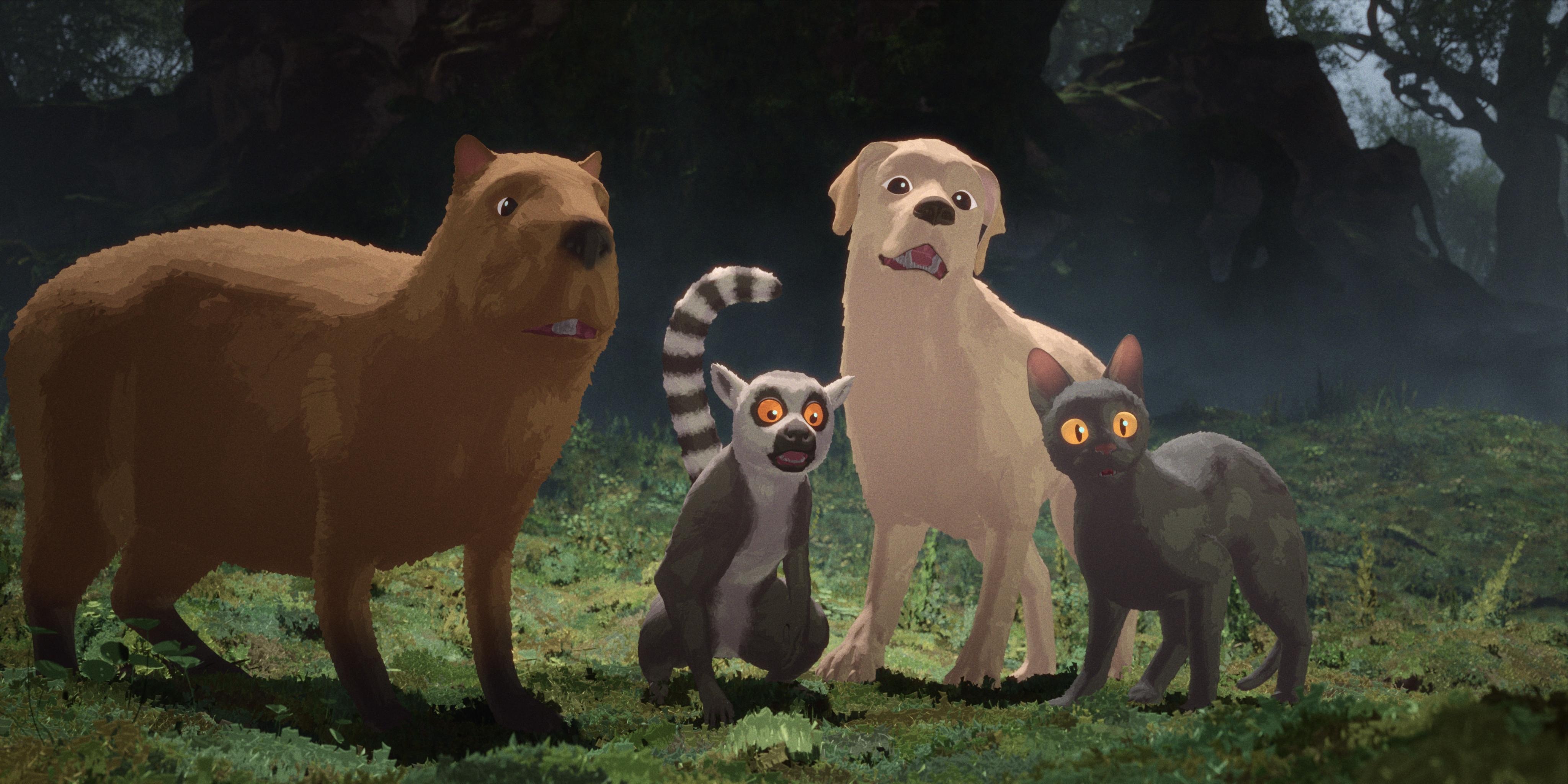
The new animated film nominated for an Oscar, titled “Flow“, is truly remarkable. This captivating production hails from Latvia and centers around a black cat and other unlikely animal companions – like a lemur, capybara, dog, and more – who band together to navigate a small boat during a flood. Without any dialogue, the story unfolds in an awe-inspiring manner, as these creatures are strikingly realistic and not anthropomorphized at all. It could have easily been a risky choice that might have repelled viewers; however, “Flow” manages to keep you fully engaged, earning its spot alongside “Inside Out 2 ” and “The Wild Robot” in the Best Animated Feature category.
There’s a wealth of valuable lessons for animation filmmakers and directors, particularly from the film “Flow.” Pursuing daring original concepts is crucial, but it’s equally important to recognize that exceptional animated cinema can emerge from diverse sources, such as a compact team working with Blender in Latvia. Furthermore, “Flow” underscores that visual-centric animation doesn’t necessarily require dialogue to flourish. Let’s accelerate the production of more silent animations that build upon “Flow’s” artistic achievements.
The Prevention of Other Silent Animated Movies

Not all movies have been as fortunate as “Flow” to debut in cinemas without dialogue, unlike some well-known animated films in the past. Marketing concerns have often hindered these silent cinema aspirations, such as for “The Land Before Time” and “Dinosaur”, which initially planned to be mostly or entirely devoid of dialogue but were made chatty by executives who thought children wouldn’t stay engaged without continuous dialogue from the characters on-screen. This tendency underscores the unfortunate reality that many long-form animated movies prioritize dialogue over visual storytelling.
In most cases, this is characterized by an abundance of humorous dialogue and shouting. Comedians such as Patton Oswalt often discuss their experiences where they are hired to write fresh jokes for off-screen animated characters that can be quickly inserted during post-production. This pattern showcases the heavy dependence of contemporary Western animation on continuous humor. There’s no room for quiet moments or contemplation; instead, viewers are bombarded with quick witted one-liners, even if they come from characters off-screen. The emphasis in these films lies primarily on jokes rather than stunning visuals.
You wind up with productions like Illumination’s “Despicable Me” films, overflowing with Minions shouting at each other and Gru using old jokes about “honey badger don’t care.” Even promising independent animated projects aren’t spared from the trend of filling animated movies with a lot of dialogue. The unfinished Richard Williams movie “The Thief and the Cobbler” initially had two main silent characters, Tack the Cobbler and The Thief. Once the film was taken away from Williams and turned into a more conventional project, Matthew Broderick and Jonathan Winters took over those roles, now filled with witty dialogue.
Flow Opened Up the Floodgates

In the realm of Western animated movies, it seemed everyone was sticking to dialogues, with big studios to small ones hesitant to introduce silence. But then came a unique change, a wave that broke the norm – Flow. This masterpiece boldly chose to be silent and, surprisingly, it resonated universally. It’s a testament that dialogue isn’t always necessary in animation, opening up new possibilities for how Western animation can express itself effectively.
A template for cinematic storytelling without dialogue through animation has been established, serving as a compelling selling point for creators pitching visually-focused projects. The film “Flow” demonstrates this effectively by using animal behavior and striking visuals, proving that unique approaches can captivate an audience’s attention without relying on constant humor or dialogue. Instead, stunning visuals and beautifully designed backdrops are capable of holding viewers’ interest, particularly in the realm of animation.
It’s unlikely that a small independent studio like Flow will immediately revolutionize the production process of every DreamWorks Animation or Illumination film. However, it might spark interest among executives to allow animated movies more freedom and reduce their reliance on dialogue. Many excellent versions of films like Dinosaur and The Land Before Time were never produced due to the belief that only dialog-heavy productions can be successful with audiences. Flow challenges this belief and opens up a new path for visually focused animation, potentially ushering in a refreshing era of cinema centered around visual storytelling.
Flow is now streaming on Max.
Read More
- OM/USD
- Jellyrolls Exits Disney’s Boardwalk: Another Icon Bites the Dust?
- Carmen Baldwin: My Parents? Just Folks in Z and Y
- Solo Leveling Season 3: What You NEED to Know!
- Despite Strong Criticism, Days Gone PS5 Is Climbing Up the PS Store Pre-Order Charts
- Jelly Roll’s 120-Lb. Weight Loss Leads to Unexpected Body Changes
- Beyond Paradise Season 3 Release Date Revealed – Fans Can’t Wait!
- Disney’s ‘Snow White’ Bombs at Box Office, Worse Than Expected
- Moo Deng’s Adorable Encounter with White Lotus Stars Will Melt Your Heart!
- The Perfect Couple season 2 is in the works at Netflix – but the cast will be different
2025-02-22 04:11